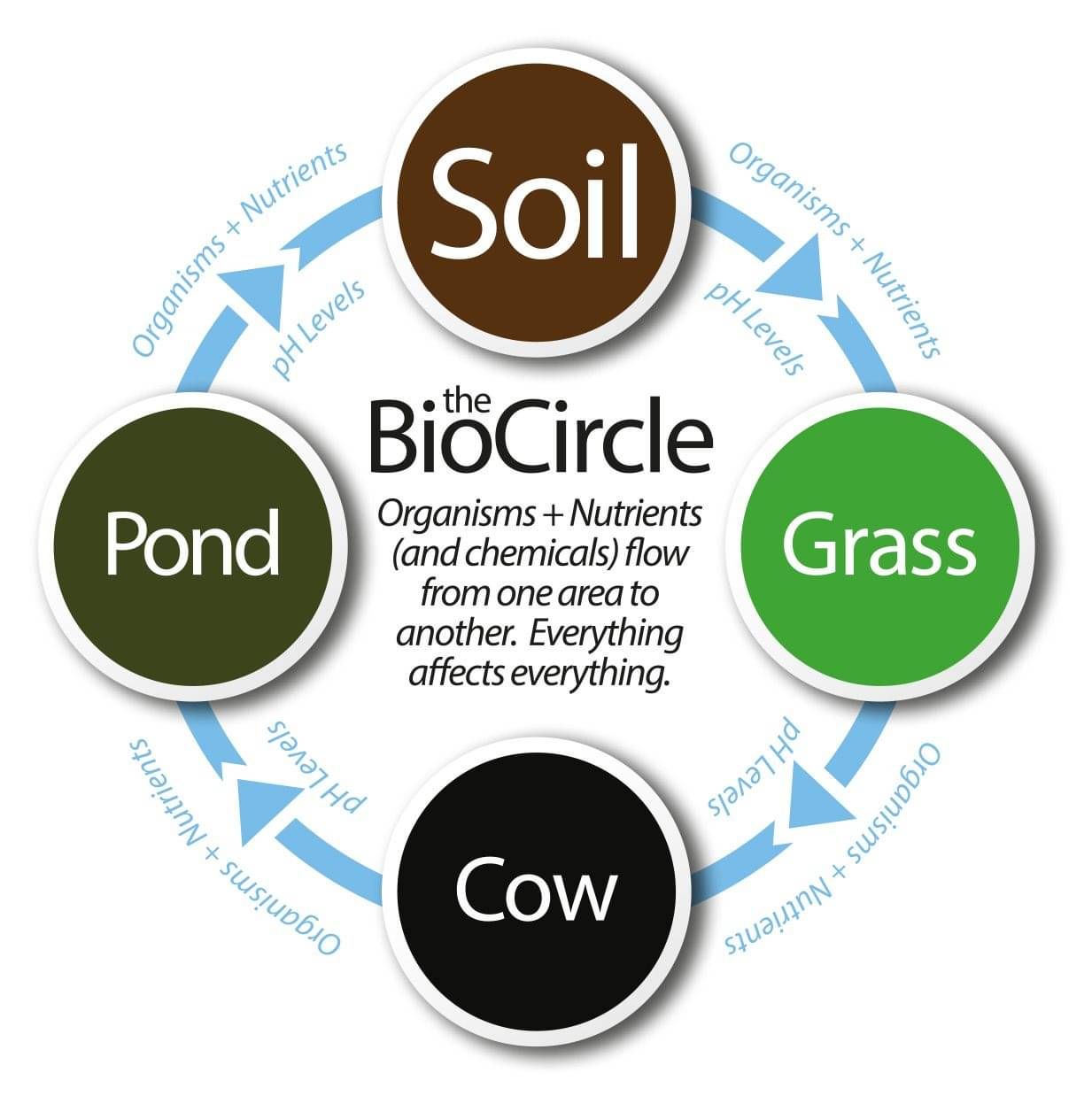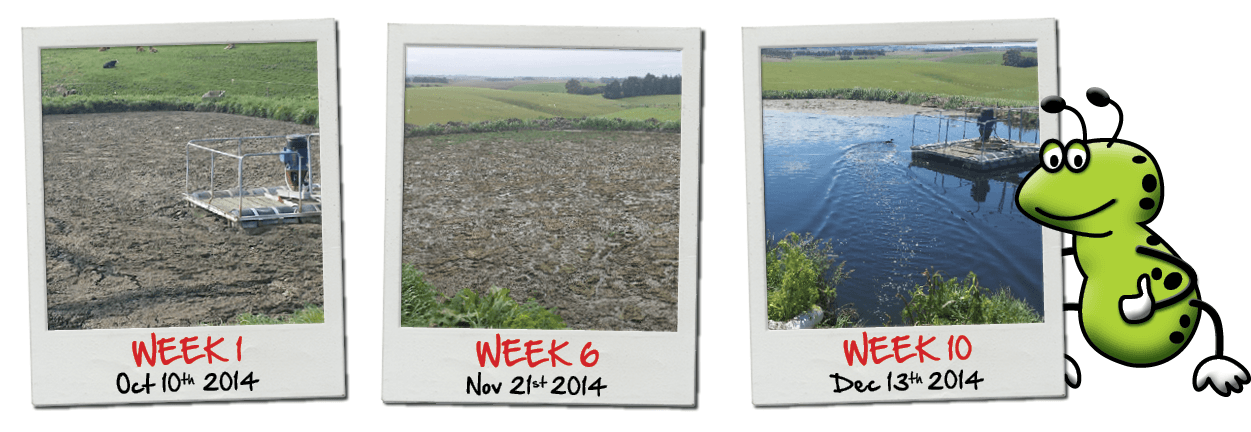Time Lapse of Slurry Bugs transforming a pond
It's one thing to be told that Slurry Bugs can change a pond. What if you could see it actually happening? This time lapse footage captures the action.
Note the seemingly 'slow' initial progress followed by rapid change. That's because Slurry Bugs eat the crust from the bottom up.
Note the seemingly 'slow' initial progress followed by rapid change. That's because Slurry Bugs eat the crust from the bottom up.
Can a pond be fixed PERMANENTLY?
YES, but you first have to understand a crucial principle: Whatever is in the soil gets transferred: to the grass > to the animals > to the effluent > to the pond. If your soil is dominated by pathogens, it is biologically inevitable that your pond will suffer the same domination.
What kind of soil is home to pathogens? A soil that has low pH levels. A low soil pH helps pathogens breed since pathogens prefer higher acidity levels. At Forward Farming, we help farmers condition their soils to:(1) promote the good biology that grows healthy grass, healthy animals, and full vats (2) to suppress the pathogens that cause disease and pond crust. This approach is not costly but works, long-term. To read more, go to www.fowardfarming.co.nz
What kind of soil is home to pathogens? A soil that has low pH levels. A low soil pH helps pathogens breed since pathogens prefer higher acidity levels. At Forward Farming, we help farmers condition their soils to:(1) promote the good biology that grows healthy grass, healthy animals, and full vats (2) to suppress the pathogens that cause disease and pond crust. This approach is not costly but works, long-term. To read more, go to www.fowardfarming.co.nz
BROWN'S POND: A clear pond WITHOUT machines? HOW is this possible?
The Browns of Pirongia were open to the idea of STARTING their pond with SLURRY BUGS already introduced and in dominant numbers. Because they began their pond in a AEROBIC state, keeping it clear of crust and sludge was a simply job of SLURRY BUG maintenance. READ MORE
Slurry Bugs ate this pond crust in 10 WEEKS
The farm is in Balclutha, South Island and runs 1000 cows. The pond is 45 cubic metresin volume. Prior to trying Slurry Bugs, management of this pond was purely mechanical - moderately effective but never able to fully liquefy the effluent nor stop the crust returning soon after stirring. That's when they decided to try SLURRY BUGS. Read more...
Using Slurry Bugs: It's very easy
Slurry Bugs is so easy to use, farmers can do it themselves. Here are the most common questions asked:
- How much do I put in my pond to begin with?
- How often do I need to keep putting Slurry Bugs in?
- Can I stop using Slurry Bugs once the crust has gone?
- Another question to balance the block up? For answers to these questions, READ MORE
FARMERS vs. THE CRUST (it's not the fight you thought it was)
For decades farmers have been fighting the crust on their ponds. It's a battle they've been waging with expensive machines. But we now know that the real culprits of that crust have been living happily underneath. They're called Anaerobic Bacteria. The bad new is, the typical effluent pond is dominated by them. The good news... READ MORE
Tank crust cleared in just 5 DAYS!
David and Christina Forster own a 750,000 litre effluent Kliptank. To deal with the issue of crusting, the Forsters looked at installing stirring machinery but rejected that option when it became apparent the stirrer would push out the walls of the tank. It was then that they introduced SLURRY BUGS. The result was as dramatic as it was quick... READ MORE






